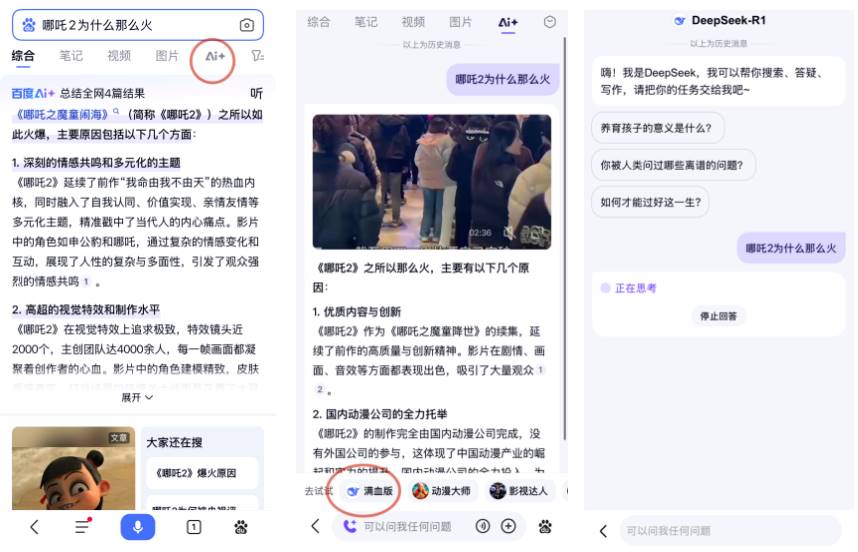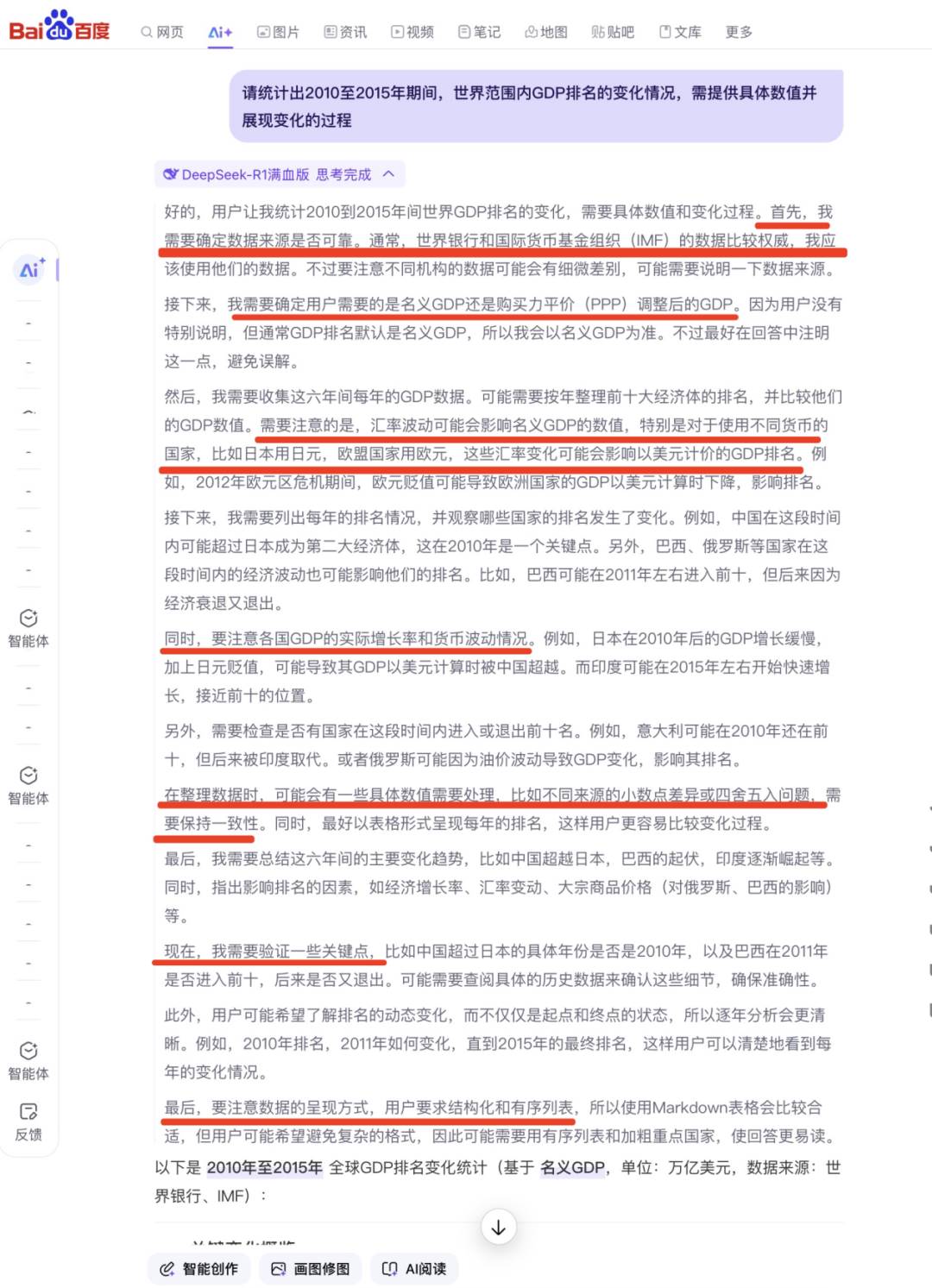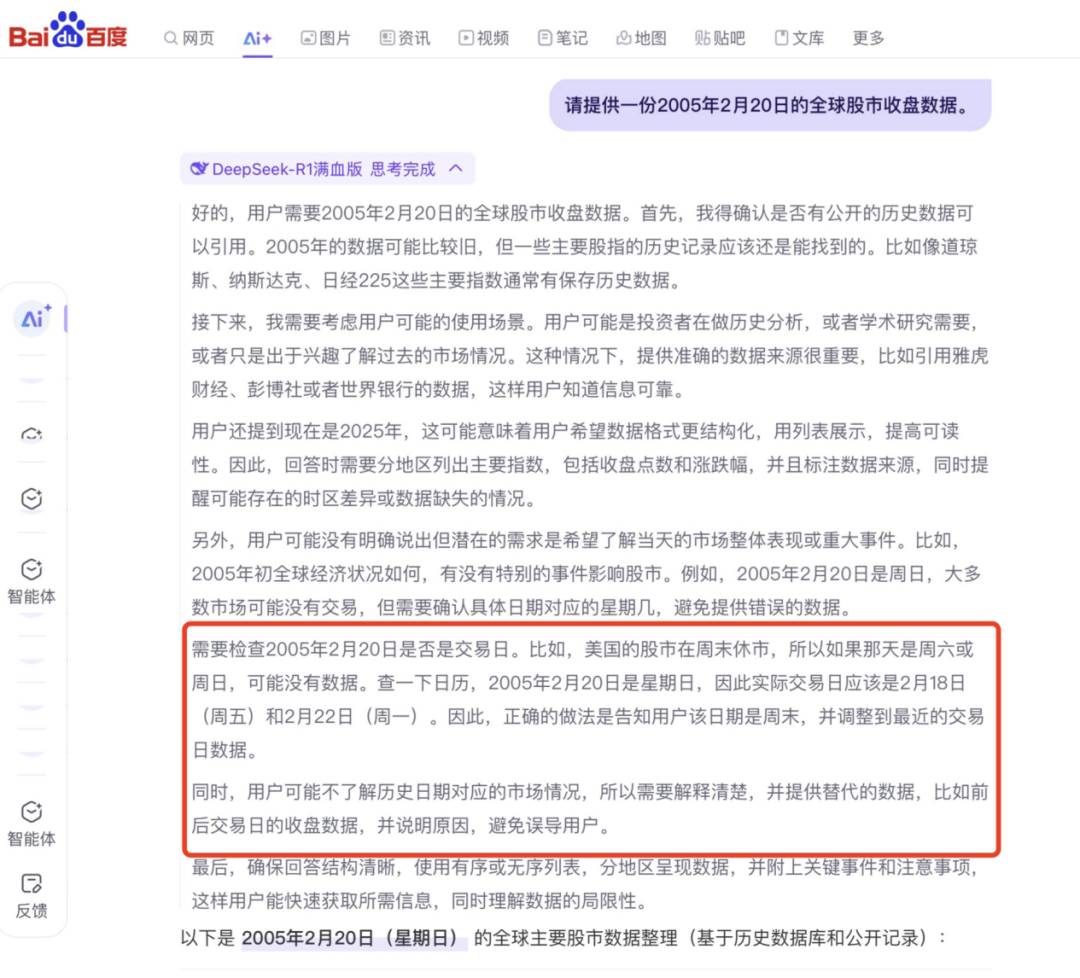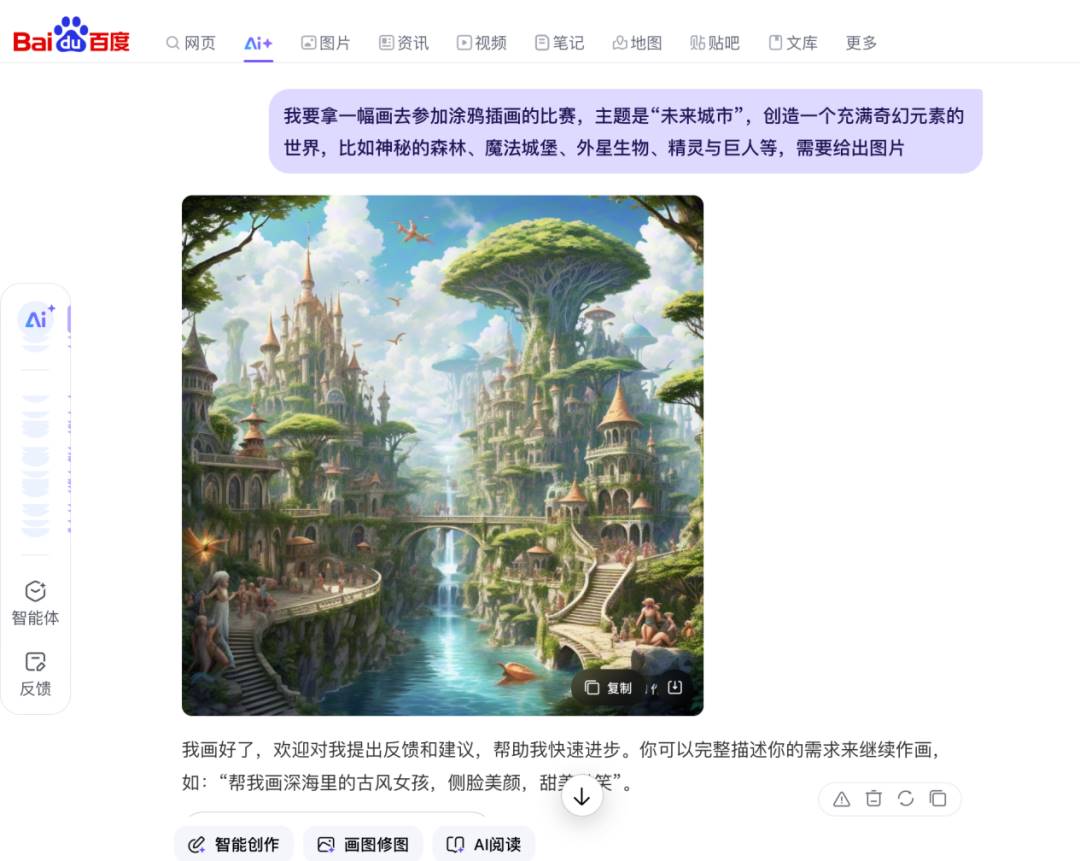Baidu Search has fully launched the DeepSeek full-version and provided online services, with over ten million users within just one hour of opening on the PC side.

Image source: Generated by Wujie AI
Following the comprehensive integration of DeepSeek and the latest deep search capabilities of the Wenxin large model on February 16, Baidu Search has now fully launched the DeepSeek full-version.
Currently, users can enter any search term in the Baidu APP, complete a round of searches, and then click on "AI+" on the search results page to enter AI search. By clicking on "Try the 'full-version'" below, they can converse with DeepSeek. Additionally, the PC version of Baidu AI Search has also integrated DeepSeek R1 full-version and provides online capabilities.

What is the effect of Baidu AI Search's DeepSeek full-version? After conducting dozens of tests, one can't help but exclaim: Baidu AI Search is truly full-powered! With the integration of the best DeepSeek model capabilities, Baidu AI Search has opened the door to a new world.
"For My Use" Rather Than "Taking for Granted"
After integrating DeepSeek, Baidu did not cut it down and ensured ample server resources. This reflects Baidu's philosophy of "for my use," rather than "taking for granted." This process is not simply about taking DeepSeek and giving it directly to users; Baidu has its own "real thing" in place.
What is this "real thing"? It is directly reflected in how Baidu, through deep technological integration and the advantages of RAG technology, helps users solve practical issues like large model hallucinations. Ultimately, it is the result of Baidu's 25 years of data accumulation. As the world's largest Chinese search engine, Baidu has accumulated user search behavior data, web index data, and content ecosystem data. This data covers multi-dimensional information from the PC internet to the mobile internet and into the AI era, including text, images, and videos, forming a unique "time barrier" that emerging AI searches find difficult to replicate.
Let's start with a question that spans 25 years: Detail the development history of China's new energy industry over the past 25 years, including specific time nodes, their impacts, and significance. The response from Baidu AI Search DeepSeek-R1 full-version is as follows:

The answer lists the 25-year development history of China's new energy industry in detail and divides it into different stages, with some data not available in other AI search engines.
During the search for this question, Baidu AI Search also showcased a new feature called "Featured Inspiration Zone," which can provide inspirational content based on current queries, helping users organize the context of their questions and understand the overall picture with just one question. Users can also click on any question in the inspiration zone to issue corresponding queries.

It is worth noting that most AI search products on the market currently display the model's "thinking" process, but the presentation is often more like "searching XXX web pages." In contrast, Baidu AI Search with DeepSeek R1 full-version can break down questions in detail. For example, inputting the prompt: "Please summarize the changes in global GDP rankings from 2010 to 2015, providing specific values and showing the process of change."

From the first step of determining whether the data source is reliable, to defining whether the question pertains to nominal GDP or GDP adjusted for purchasing power parity (PPP), to searching for early data and ranking it, this resembles the process of a human brain analyzing a question layer by layer.
What is astonishing is that Baidu AI Search with DeepSeek R1 full-version can comprehensively consider various minute details and thoughtfully address how to handle special situations, such as paying attention to the actual growth rates and fluctuations of GDP in different countries, the impact of exchange rate fluctuations, and the rounding parts in data processing. This is indeed something I did not expect. One can only exclaim: Baidu AI Search with DeepSeek R1 full-version is just too comprehensive!
The complete answer to this question is as follows, automatically choosing to present it in a tabular format without being prompted, and providing clear indications at key events.
After the integration of Baidu RAG and DeepSeek-R1, has the degree of hallucination really been reduced? The next question tests the hallucination level of Baidu AI Search DeepSeek full-version: "Please provide the global stock market closing data for February 20, 2005."
The tricky part of this question is that February 20, 2005, was a Sunday, and most countries would not have stock market operations on that day. If the model has hallucinations, it would not be able to avoid this "pitfall" and would start misattributing data from other events to February 20, 2005. However, the thought process of Baidu AI Search DeepSeek full-version is as follows:

From the thought process, it is clear that the problem was defined during the analysis process, and it did not "seriously talk nonsense." The answer provided is rigorous and accurate.
Based on this, the question was upgraded in difficulty: "Provide hourly data for the European market on February 18, 2005." This requires a finer granularity in the answer, and Baidu AI Search DeepSeek R1 full-version responded as follows:

The professional data accumulated by Baidu over the years has also been better released after the combination of the two. Asking the model a professional question: "Please analyze the formation mechanism of drug prices in China and its influencing factors in detail, and explain the role and significance of medical insurance drug price negotiations in the context of current policies."
This question targets the issue of drug prices in the healthcare industry, testing the model's expertise and maturity in specific domain knowledge. Moreover, the question explicitly requires consideration of current policy contexts, also testing whether the model can accurately capture timely information. The response is as follows:

The answer contains multiple data details, such as noting that the annual treatment cost of PD-1 inhibitors has decreased from 300,000 to 50,000-100,000 in the context of "exchanging price for volume" to improve fund utilization efficiency, and indicating that CAR-T therapy has dropped from 1.2 million to 330,000 among the 74 new drugs included in the medical insurance catalog, demonstrating the model's deep accumulation of data in the specialized field of medical drugs.
DeepSeek-R1 enhances the reasoning capabilities of Baidu AI Search, while Baidu AI Search itself is also leveraging its advantages by adding multi-modal capabilities on top of the large language model DeepSeek. Inputting the prompt: "I want to submit a painting for a graffiti illustration competition with the theme 'Future City,' creating a world full of fantastical elements, such as mysterious forests, magical castles, alien creatures, elves, and giants, and I need to provide an image." This question contains multiple visual themes, requiring both the understanding capabilities of the large language model and the generation capabilities of the image model, resulting in the following image:

With the launch of DeepSeek-R1 full-version, Baidu AI Search's coding capabilities have also reached a new level. Inputting the prompt: "Please write a code that generates an image saying 'Congratulations on Nezha's box office success,' along with an image of Nezha, and check the code's effect." The answer is as follows:

This response not only includes the complete code running file but also provides explanations for visual element validation, animation testing, compatibility testing, and suggestions for enhancing effects, allowing users to make custom adjustments.
Returning to User Value, Rather Than Technical Isolation
Today, looking back at the history of artificial intelligence development in China, whether it was the early layout of key technologies such as NLP, knowledge graphs, and machine learning around 2010, or the "ahead of the curve" development of ERNIE Bot during the large language model wave, Baidu's attitude towards artificial intelligence has consistently been "insist on high self-research and increase investment."
Even with "insisting on self-research like Baidu," in the face of the impact of DeepSeek, Baidu has begun to integrate external large models into its super APP, incorporating third-party model partners into its ecosystem. This is a progress under the large model strategy aimed at an industrial operating system, essentially a strategic combination that Baidu is building around "large models + search."
This means that Baidu Search is returning to user value itself, not only not being complacent but also exploring the integration of its core and key businesses with DeepSeek. The trend indicated behind this is that China's internet is shifting from a super APP, self-sufficient "island ecosystem" to a "technology community" with increasingly close connections.
免责声明:本文章仅代表作者个人观点,不代表本平台的立场和观点。本文章仅供信息分享,不构成对任何人的任何投资建议。用户与作者之间的任何争议,与本平台无关。如网页中刊载的文章或图片涉及侵权,请提供相关的权利证明和身份证明发送邮件到support@aicoin.com,本平台相关工作人员将会进行核查。




